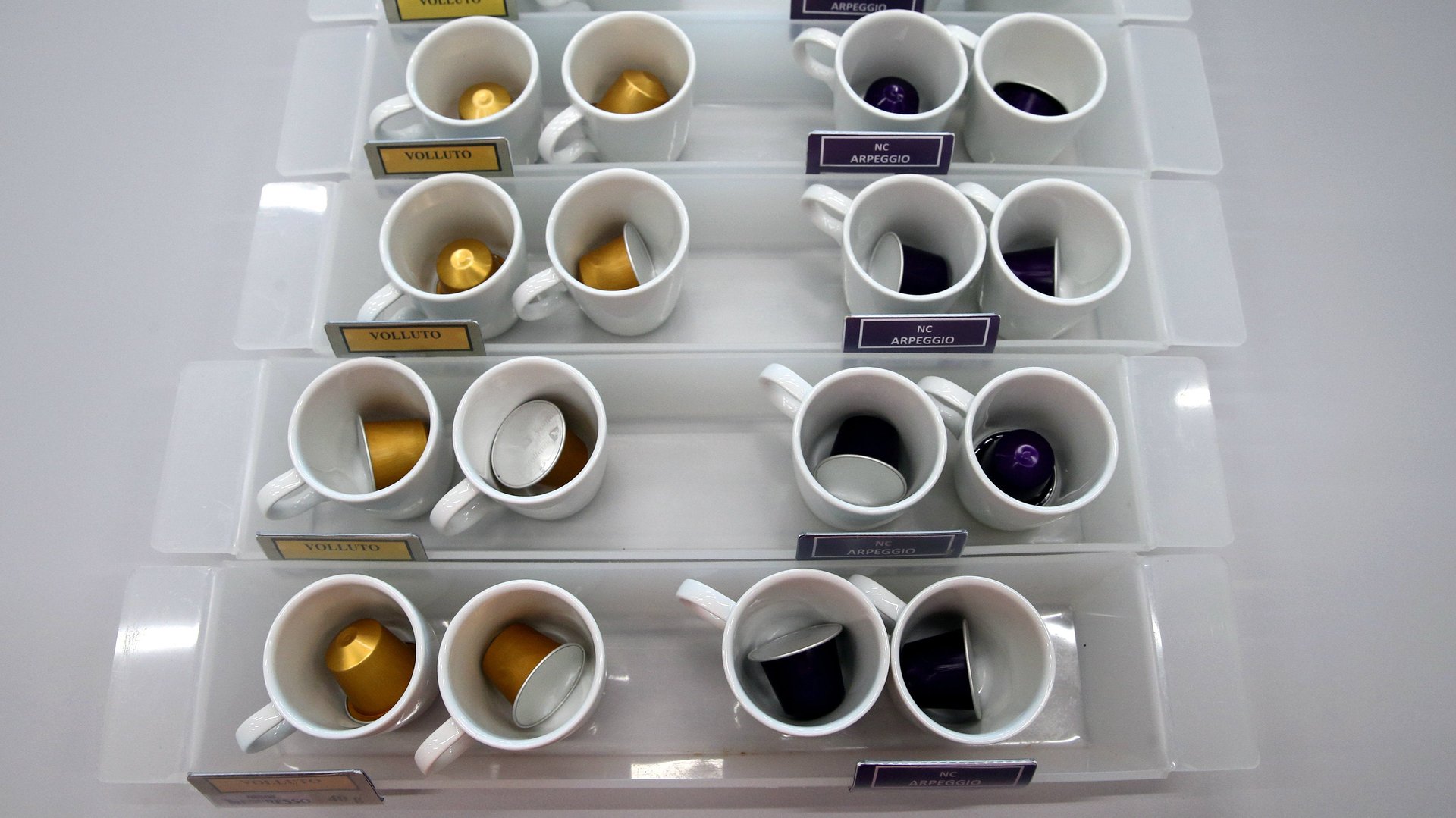Nespresso has ruined hotel coffee
It’s no secret that the concept of luxury in the hotel sector is changing. Modern guests are less concerned with bell hops and plush terry-cloth robes and more interested in the hipness of the hotel bar or the seamlessness of online booking and check-in.


It’s no secret that the concept of luxury in the hotel sector is changing. Modern guests are less concerned with bell hops and plush terry-cloth robes and more interested in the hipness of the hotel bar or the seamlessness of online booking and check-in.
But one thing about this new, highly-customizable concept of hotel luxury sticks out to me, and not in a good way. Somehow, when it comes to hotel coffee, the new luxury seems to be the Nespresso pod.
I see it in hotels everywhere, and not just in the small machines that have replaced kettles and drip coffee machines in so many hotel rooms. Indeed, at least half a dozen of the hotels I stayed in last year had no non-Nespresso (or, the competitors Keurig, Tassimo, Dolce Gusto etc) coffee to speak of. I’ve gotten so tired of having to leave my hotel to get a non-pod cup of coffee, that on a recent trip to a boutique hotel, I Googled the setup before hand. Sure enough, I had to pack an aeropress, hand grinder, and beans to account for the lack of normal coffee.
This is more than just an inconvenience or affectation—it’s a loss, too. You see, ordering hotel coffee via room service used to be one of my greatest travel indulgences. The slightly unnecessary pomp and circumstance of a morning cup of caffeine being delivered to my room was an extravagance I allowed myself once on every getaway. Even when I procured my caffeine the reasonable way—by trekking down to the lobby or breakfast room—I knew I could find that strong, bottomless, reliable kind of caffeine hit that somehow always tasted better in a hotel. It wasn’t necessarily single-origin or freshly ground, but it was always strong and comforting.
Of course, it’s no accident that Nespresso has landed in so many hotels—and fine dining establishments for that matter. The company has an entire B2B wing, appearing at trade shows, and selling a suite of different products designed for the hospitality sector. It has had agreements with luxury hotels including Hilton Worldwide, Shangri-La, The Park Hyatt, and Sofitel and its website copy notes that stocking Nespresso “affirms your establishment’s association with a discerning luxury lifestyle.” According to a 2015 stat from Nespresso, its machines are in 30% of the world’s 2,400 Michelin star restaurants.
The brand has also invested in an entire suite of lifestyle and experiential efforts, with a Nespresso cafe opening London’s Soho neighborhood last year, where baristas are replaced by “maestros” to help you choose your pod. In the past, they’ve launched an online lifestyle magazine and garnered celebrity spokespeople no less famous than George Clooney and Penelope Cruz.
While the lifestyle optics can be blinding, it’s not hard to figure out why all these hotels and high-end restaurants are buying in: Quite simply, it’s convenient. Whether it’s a small in-room machine or one of the high-volume “Aguila” machines—a piece of equipment which certainly looks like an Italian espresso machine, but has never seen a whole coffee bean in its life—they don’t have to clean out espresso machines or deal with coffee grounds of any kind. Furthermore, they don’t need to hire or train baristas, and they can rely on Nespresso’s “dynamic portioned coffee segments” to serve replicable and fast cups of coffee.
However, what is bewildering to me is Nespresso’s popularity. Generally, things that are overly-branded and cause unnecessary waste have the upside of tasting better and being less of a pain to acquire. Nespresso and its pod competitors are neither of those things. In addition to their well-documented sustainability problems, they taste like they’ve come out of a plastic or aluminum pod (because, of course, they have). Plus, there is no control over the brewing process or strength of coffee, and consumers are at the whim of one company for both their coffee and the machine in which it’s made. Ah, capitalism.
And then, of course, there is the quality. Compared to many people I know, I’m not a coffee snob—I will just as happily drink Dunkin’ Donuts drip as pour-over from the local hipster cafe—but I’m guessing the type of person who loves Nespresso coffee doesn’t like the taste of coffee much at all. Taste is a matter of opinion, of course, so don’t take my word for it. It’s a fact generally acknowledged that the less time elapsed between grinding the bean and brewing the coffee, the better the resulting cup. When it comes to Nespresso, the time that elapses can be months, rather than minutes. One prominent coffee expert said it best when he described Nespresso as the “ready-meal” of coffee.
And therein lies my fury. I’m not just angry that more and more hotels have replaced regular coffee with Nespresso machines because it’s more convenient and scalable for them—I’m angry because they’ve done so under the guise that this offering is actually “luxurious.” It is a truly impressive feat of late capitalism that pre-ground coffee, served in a landfill-bound plastic or aluminum pod, and made through a process that is completely automated has become synonymous with luxury. And frankly, it’s ruining the joy of hotel coffee altogether.
So please, hospitality, if you’re reading: Bring back generic, strong drip coffee. It doesn’t have to be fussy, or hipster, or overly-wrought. As long as it’s strong and doesn’t taste like plastic.
Correction: This story has been updated to reflect that some coffee pods are made out of aluminum, not plastic.